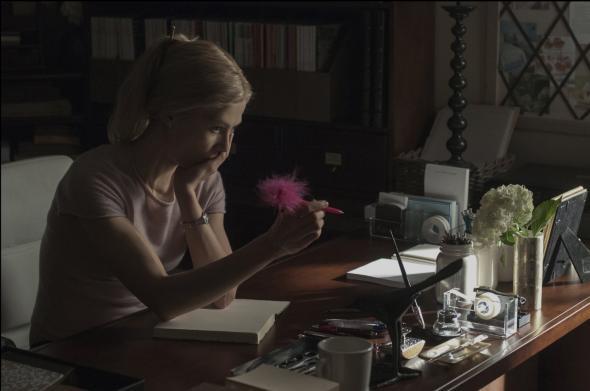There are no spoilers in this post. Really.
Time will tell what it is about David Fincher’s Gone Girl that people remember, but when it comes to the Gillian Flynn novel that the movie is based on, we already know: It’s the “Cool Girl” speech. That riff by the book’s titular missing woman, Amy Dunne, has been cited and debated and referenced over and over in the two years since the best-seller was published. It is, almost indisputably, the cultural legacy of the book.
The passage in question goes on for a couple of pages, but the part most frequently quoted begins like this:
Men always say that as the defining compliment, don’t they? She’s a cool girl. Being the Cool Girl means I am a hot, brilliant, funny woman who adores football, poker, dirty jokes, and burping, who plays video games, drinks cheap beer, loves threesomes and anal sex, and jams hot dogs and hamburgers into her mouth like she’s hosting the world’s biggest culinary gang bang while somehow maintaining a size 2, because Cool Girls are above all hot. Hot and understanding. Cool Girls never get angry; they only smile in a chagrined, loving manner and let their men do whatever they want. Go ahead, shit on me, I don’t mind, I’m the Cool Girl.
“Men,” the next paragraph says, “actually think this girl exists.” And that line is key: The essential targets of Amy’s critique are men who think of women as extensions of themselves, as creatures who are meant to fulfill their own desires and not to have independent wants or needs that might occasionally come into conflict with them. That’s a very old attitude, obviously, but the Cool Girl archetype offers a newish spin on it, because the Cool Girl on the surface seems modern and maybe even progressive—she doesn’t appear traditionally feminine, she’s into “guy” stuff. Which makes this fantasy woman all the more beguiling for a certain kind of man who doesn’t want to be challenged in any way by his wife or girlfriend. But everyone gets angry sometimes. And when two people are honest with each other about the things they want and need, there will occasionally be disagreements. The Cool Girl is a myth.
That said, the passage is not just a critique of men. Quite a bit of it, in fact, is a critique of women—specifically, the women who contribute to this myth. Right after noting that men actually think the Cool Girl is real, Amy says, “Maybe they’re fooled because so many women are willing to pretend to be this girl.” It’s the pretending that matters: Whatever the Cool Girl likes, she likes not for herself, but in order to please a man. So if the man in question is a vegetarian, then she “loves seitan and is great with dogs.” Or if he’s a “hipster artist,” then she’s “a tattooed, bespectacled nerd who loves comics.” Whatever the “window dressing” may be, the Cool Girl is “the girl who likes every fucking thing he likes and doesn’t ever complain.”
And so while the Cool Girl speech is fundamentally about wishing all women would think for themselves and pursue their own interests, it can be misread as a critique of women who happen to like poker or comic books or burping. (It maybe doesn’t help that certain famous women tend to get picked on when the topic arises: Olivia Wilde, Mila Kunis, Jennifer Lawrence.)
Which is why I found the staging of the speech in David Fincher’s adaptation strange, and a little unfortunate. Without spoiling anything, the speech arrives as a voiceover while we watch Amy driving on the highway. And as she talks about women who like dirty jokes and anal sex and hamburgers, the camera follows her eyes to women in cars around her. They are, if I recall correctly, all or at least mostly young women, in their 20s or 30s, probably. None of them, as far as I noticed, are with men. Two stand out in particular: a pair of women together in the front seats of a car who look young enough to be sorority sisters, laughing uproariously, appearing to have the time of their lives.
Movies, of course, are not speeches, and their meanings are not always literal. But the pairing of the Cool Girl riff with these images implies a connection between them—basically, “Look at these awful Cool Girls. They’re the worst.” That is, I suspect, what many viewers are likely to surmise of Amy’s thinking. It is, in any case, what the scene seemed to me to say. (One of my colleagues found the connection between the images and the speech unclear, but inferred, as I did, that Amy seemed to have “contempt for the women in passing cars.”) The utterly essential presence of men in the myth of the Cool Girl does not, in Fincher’s version, have any visual corollary. And that doesn’t really represent the idea of the Cool Girl at all.
